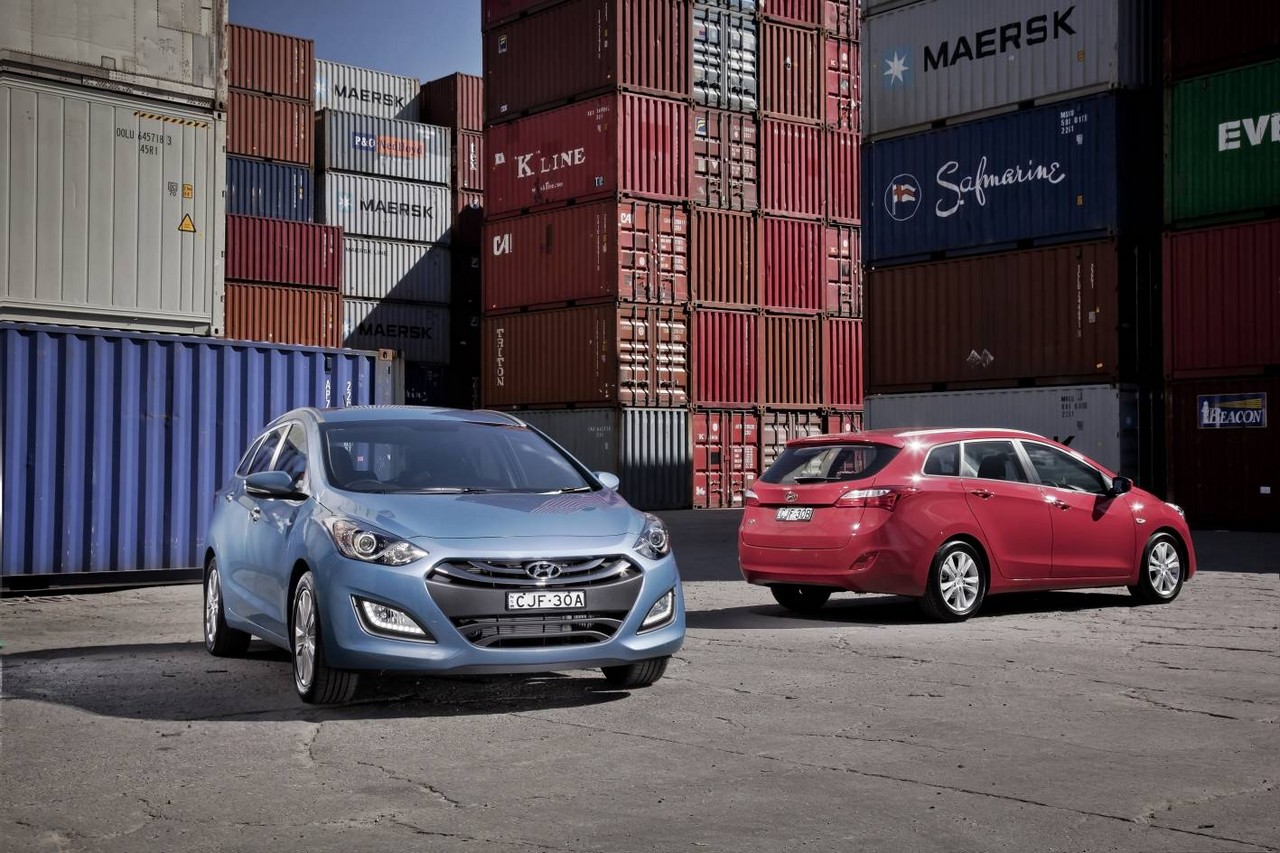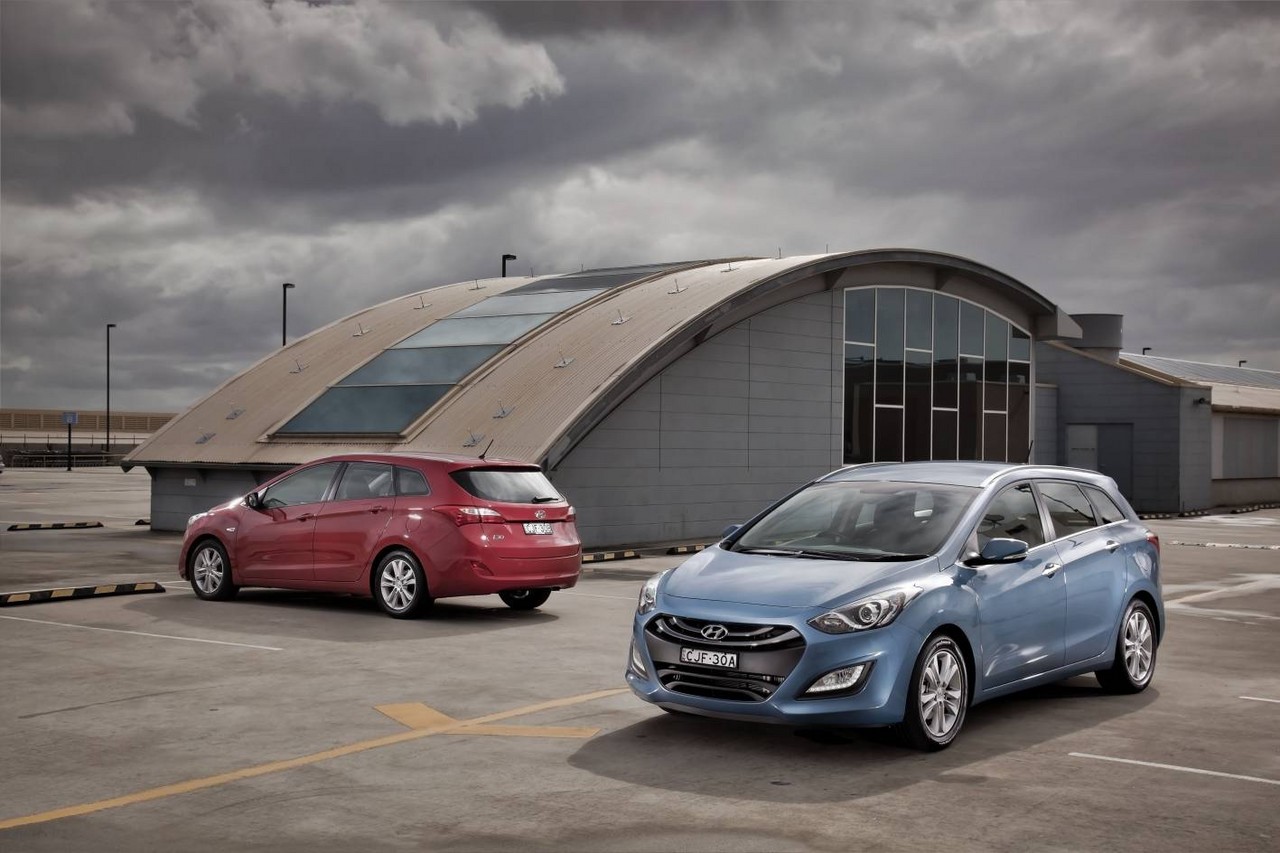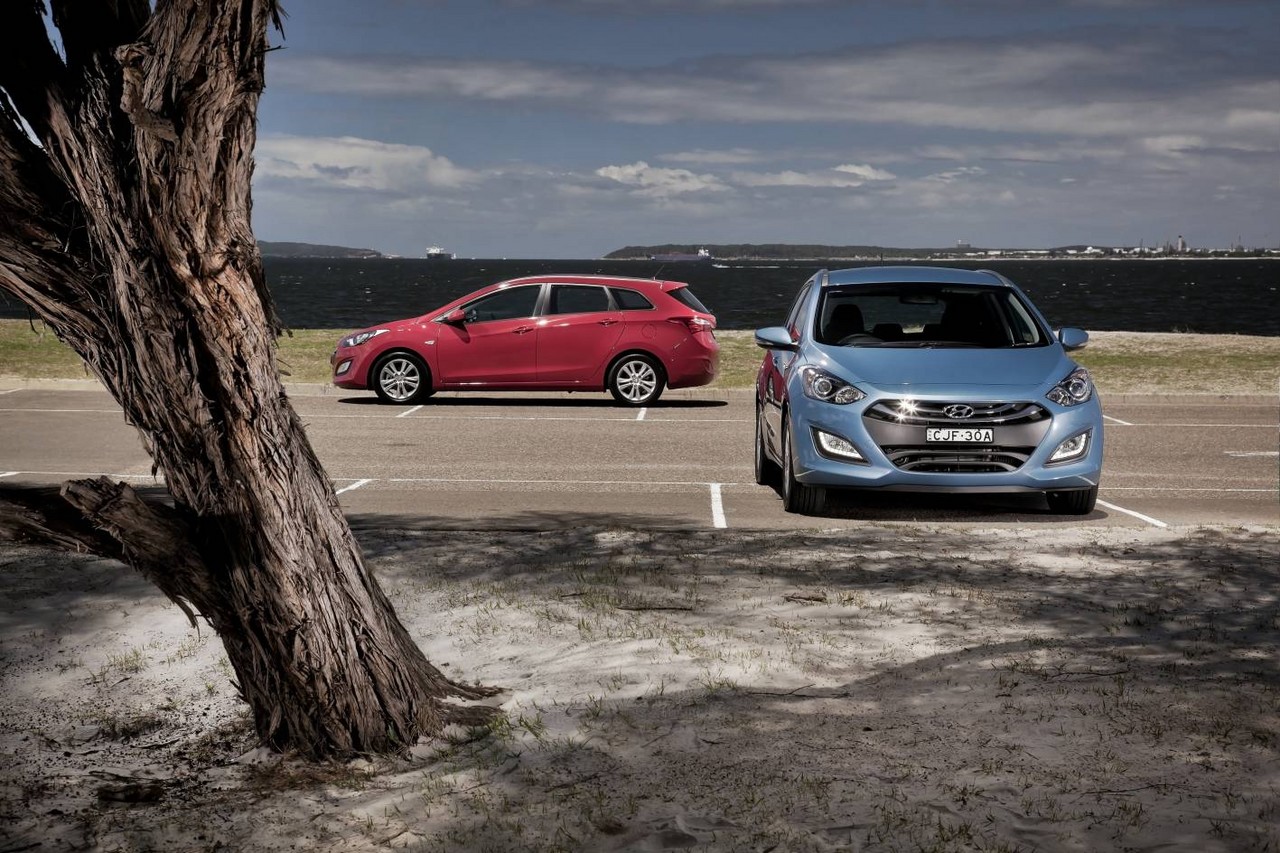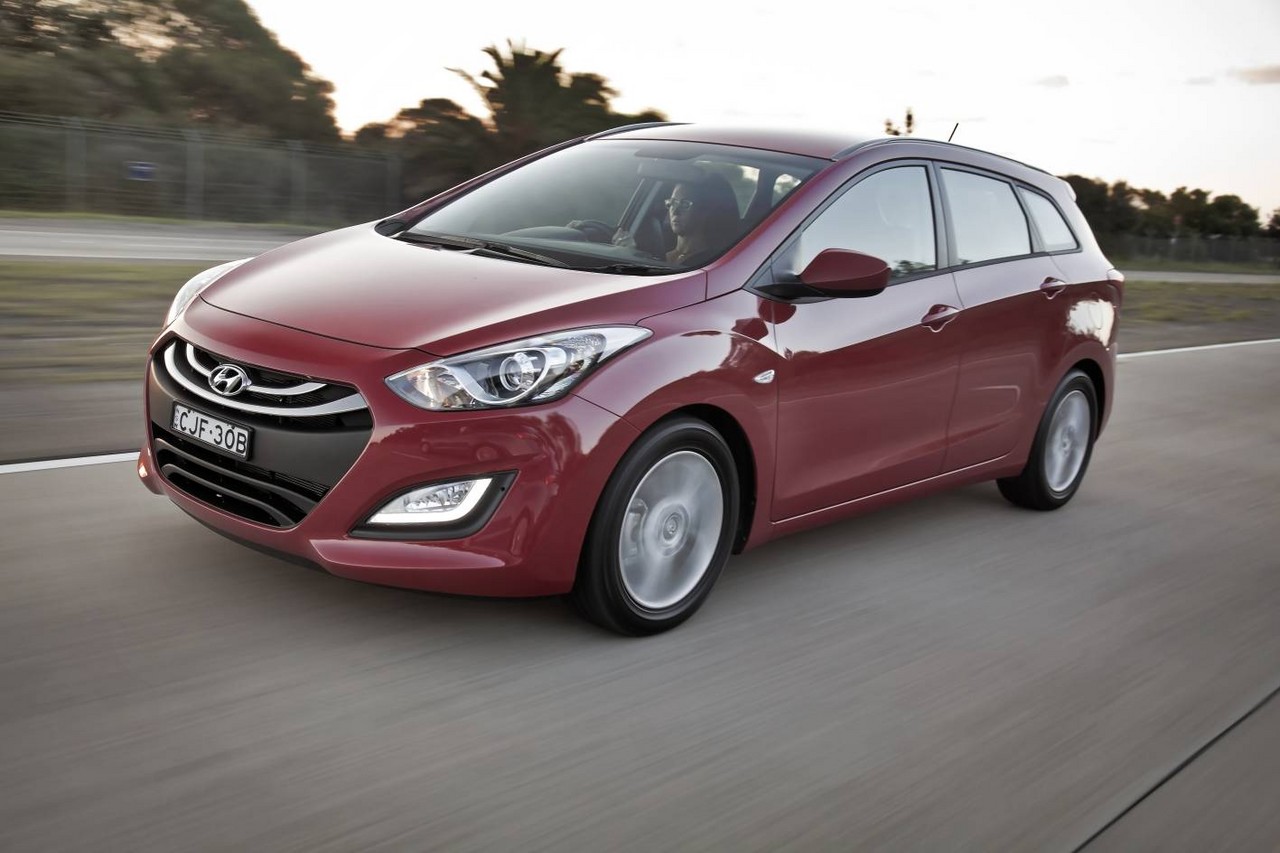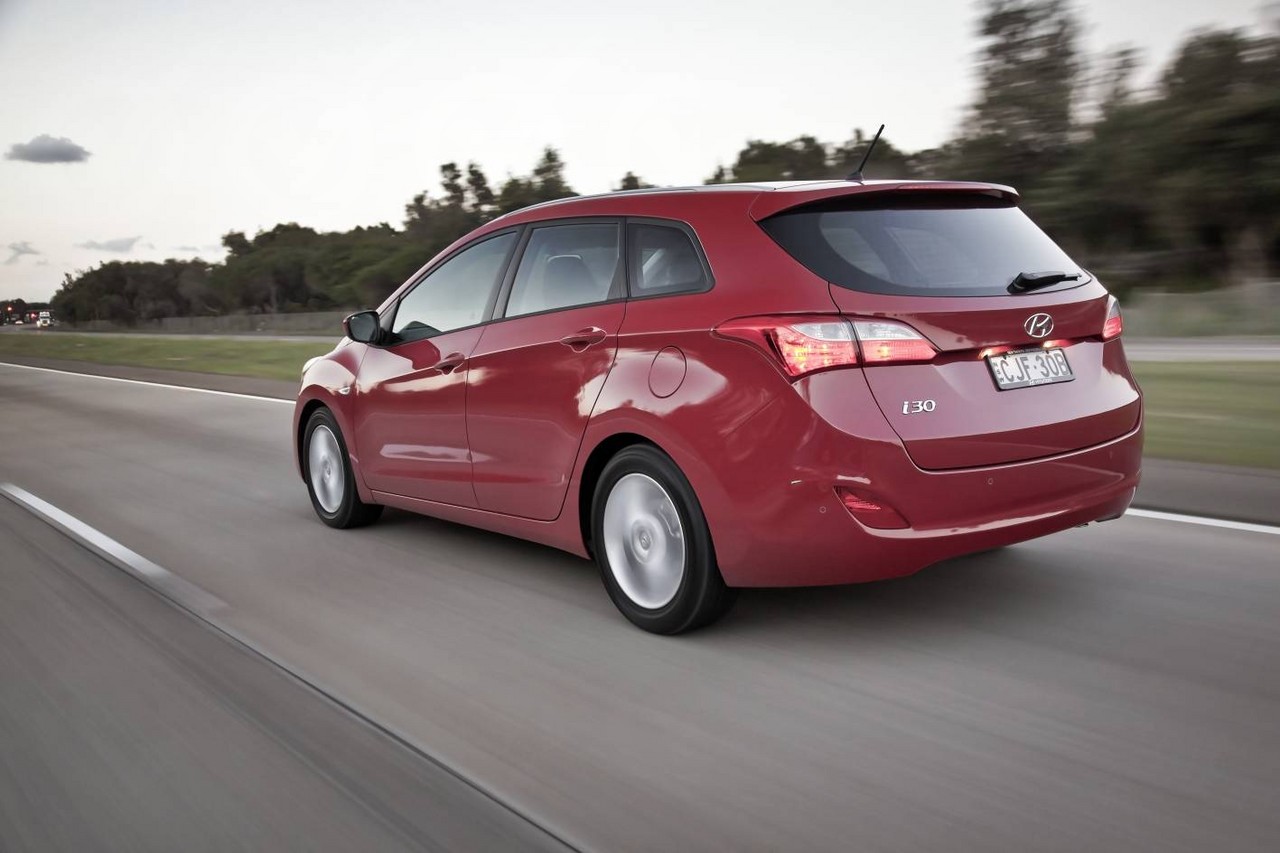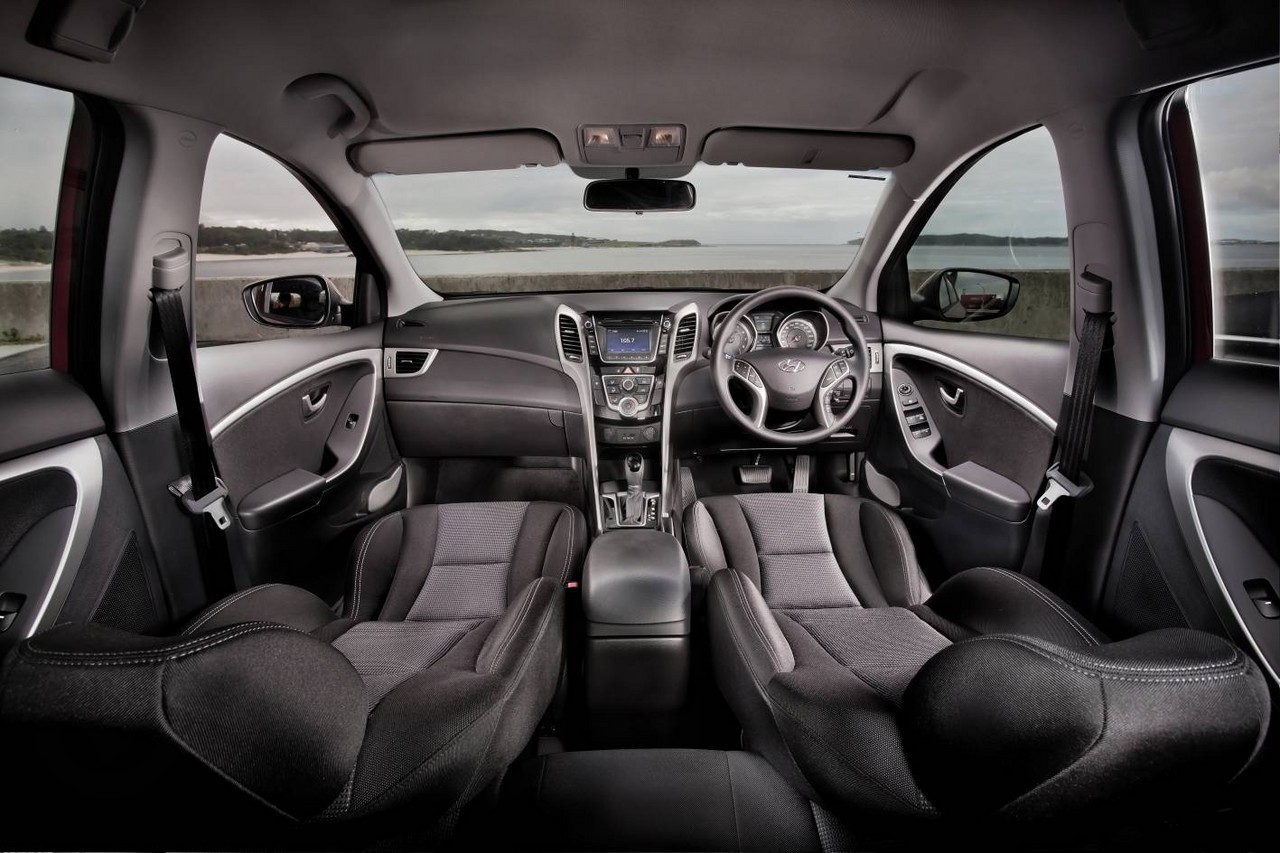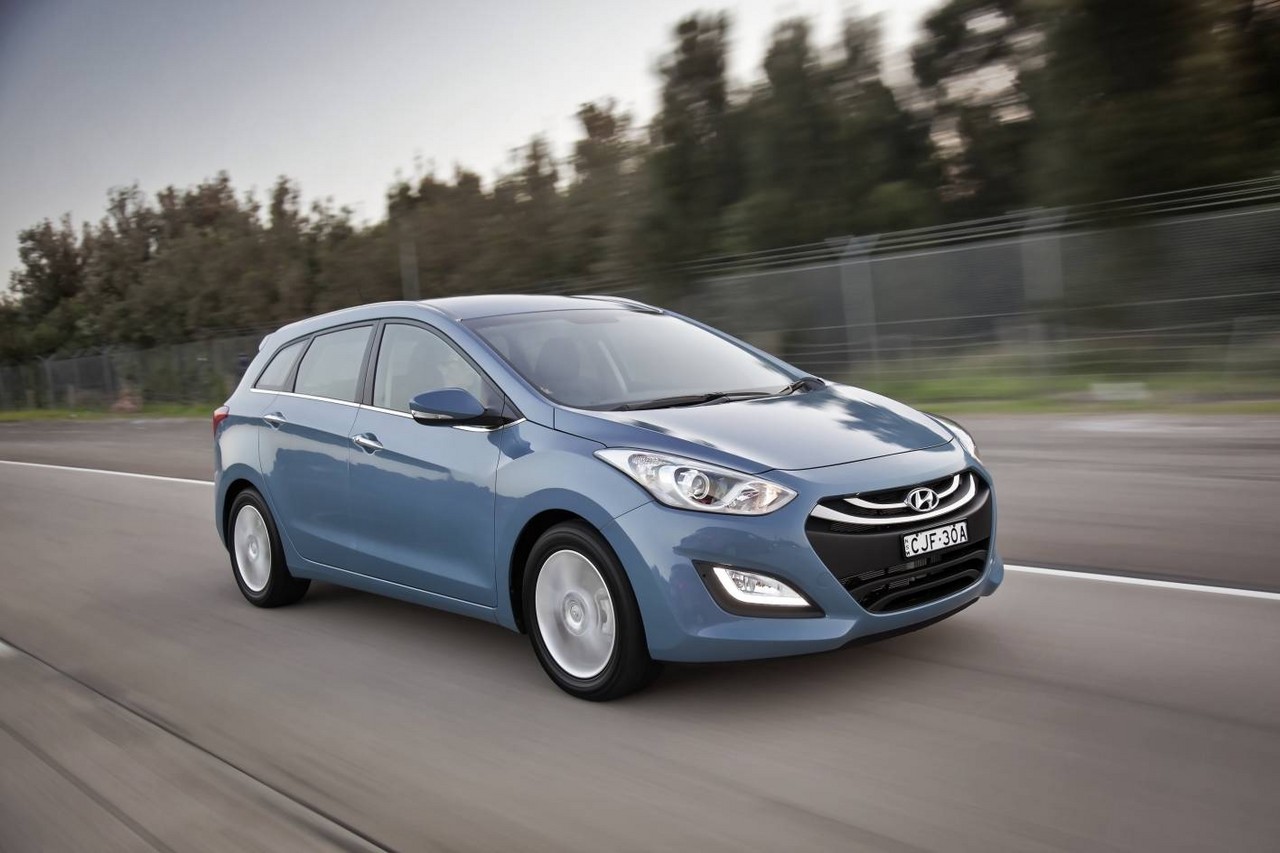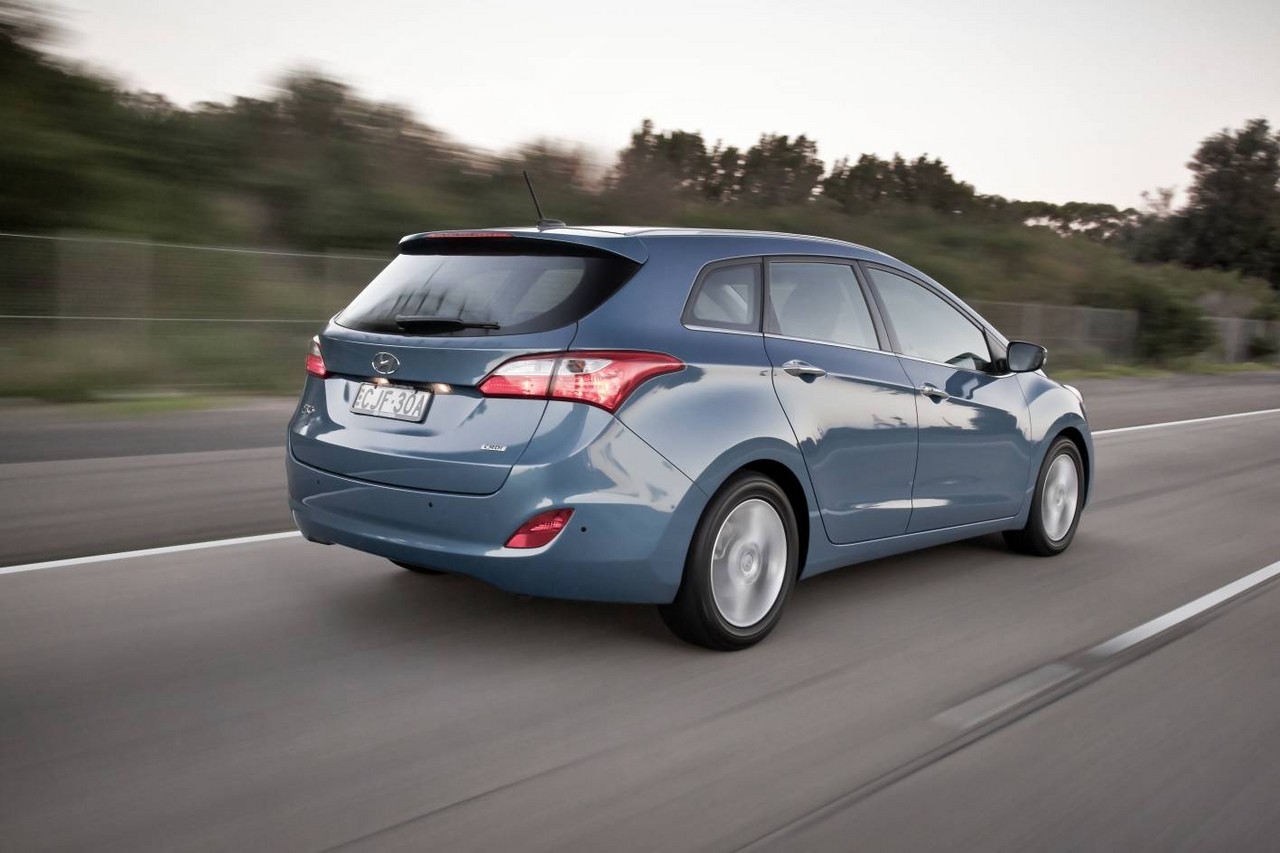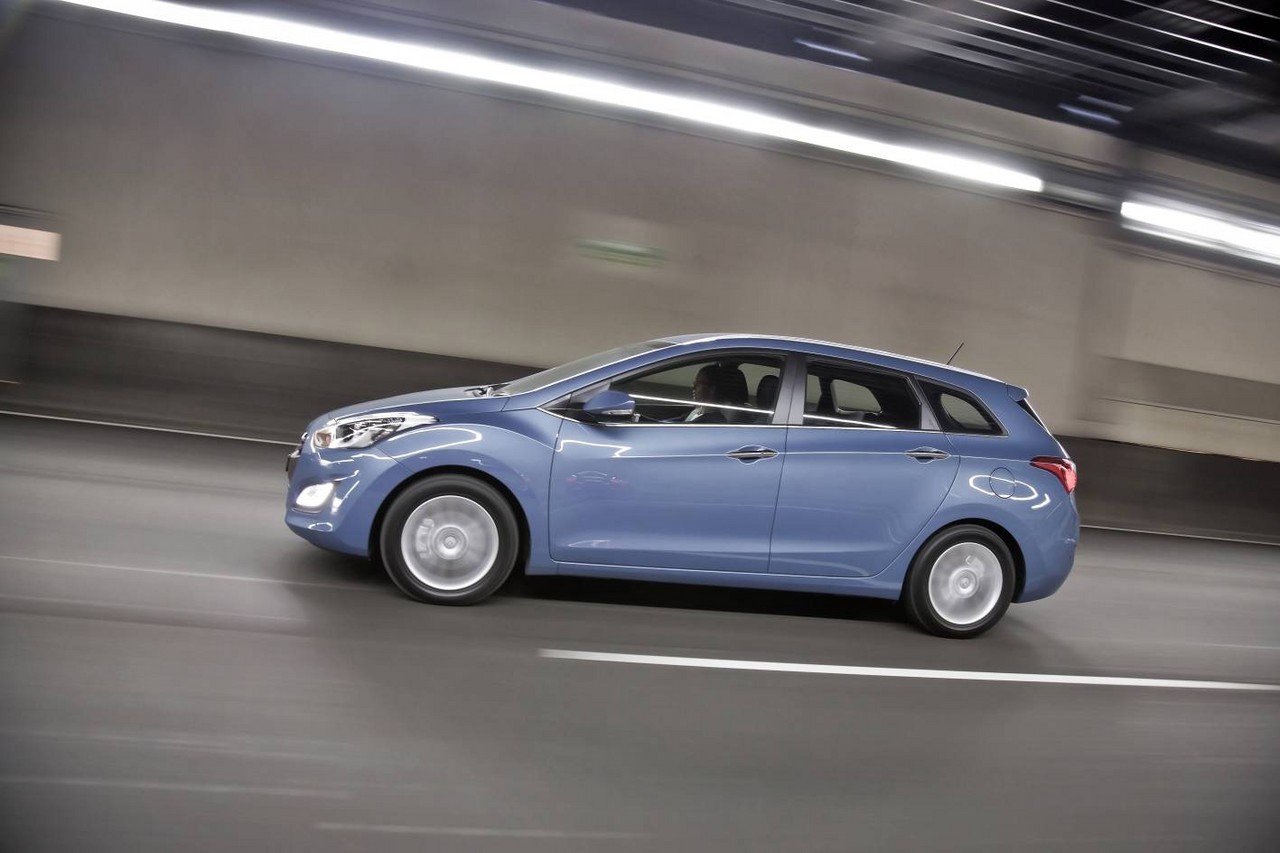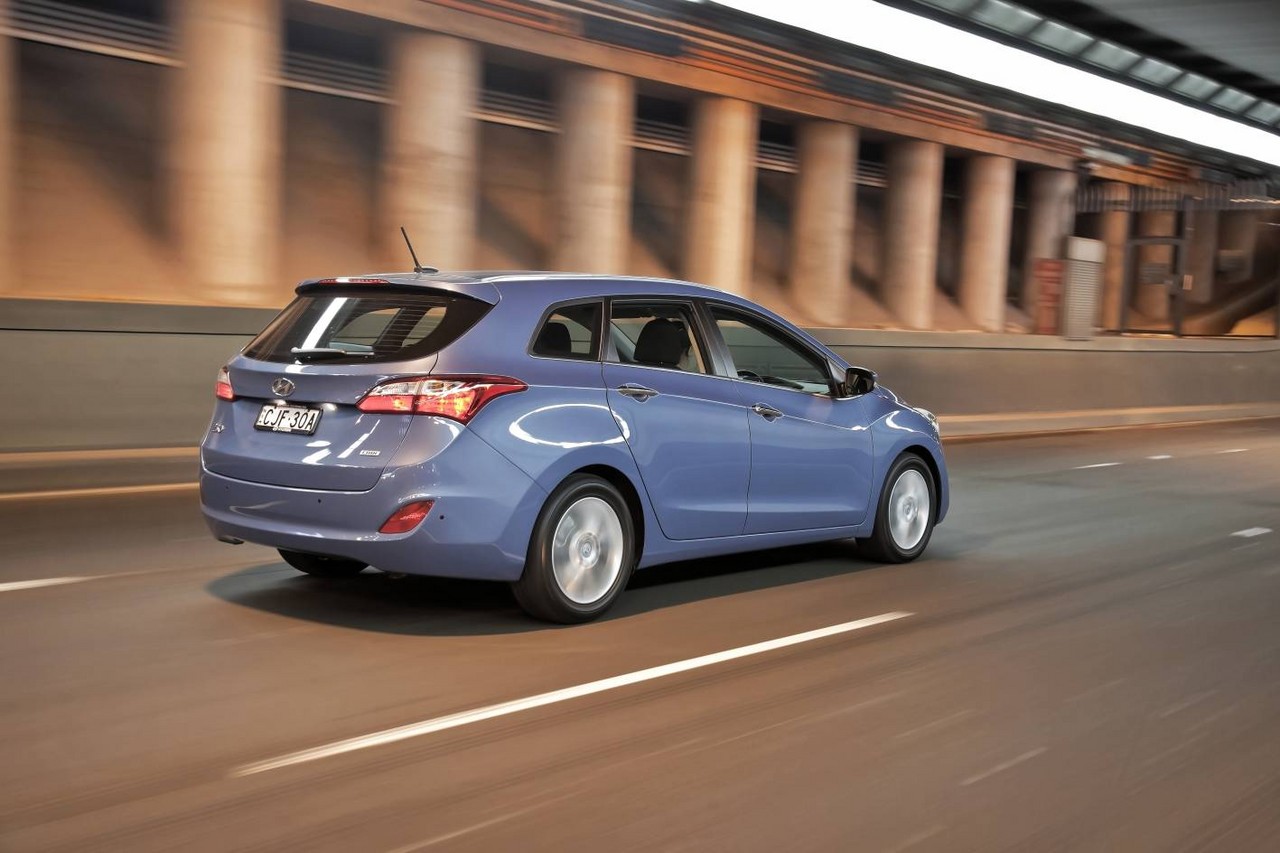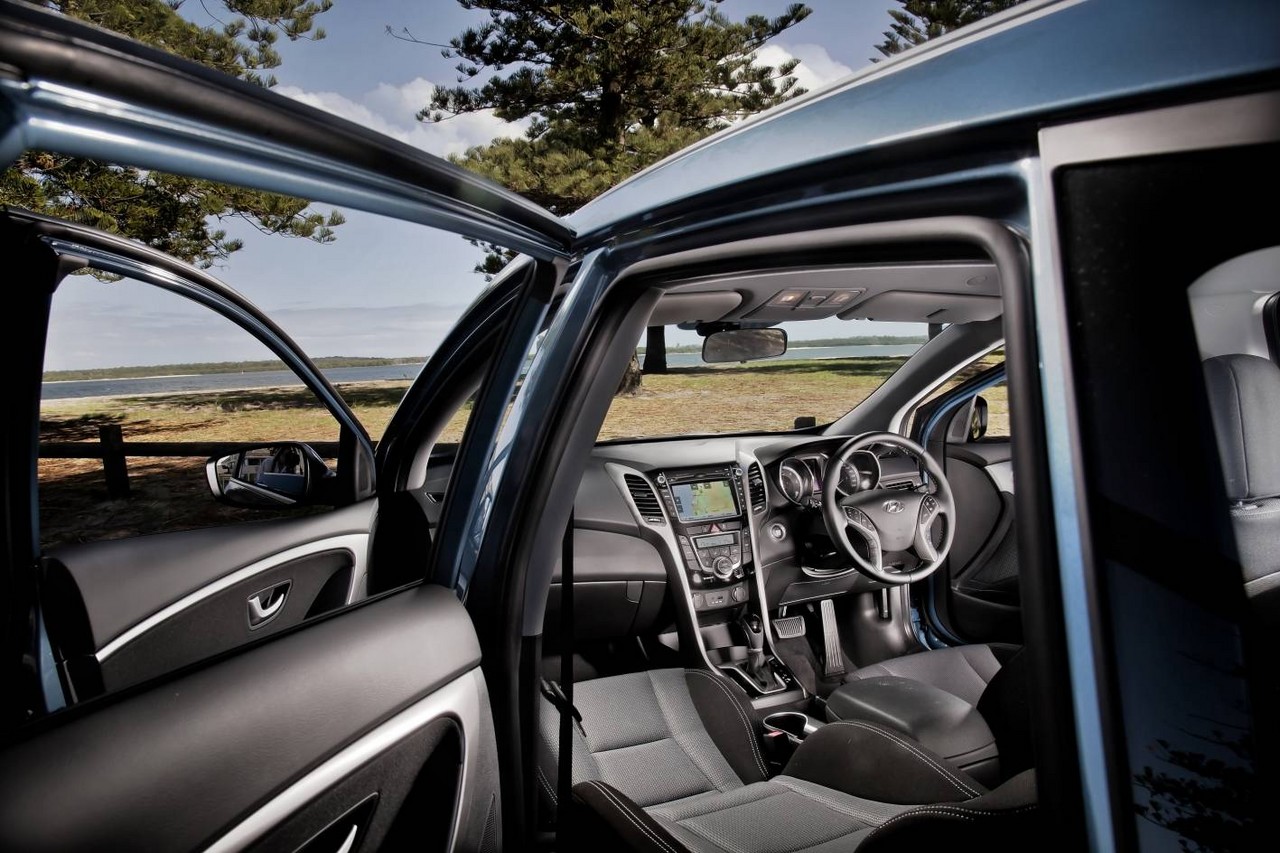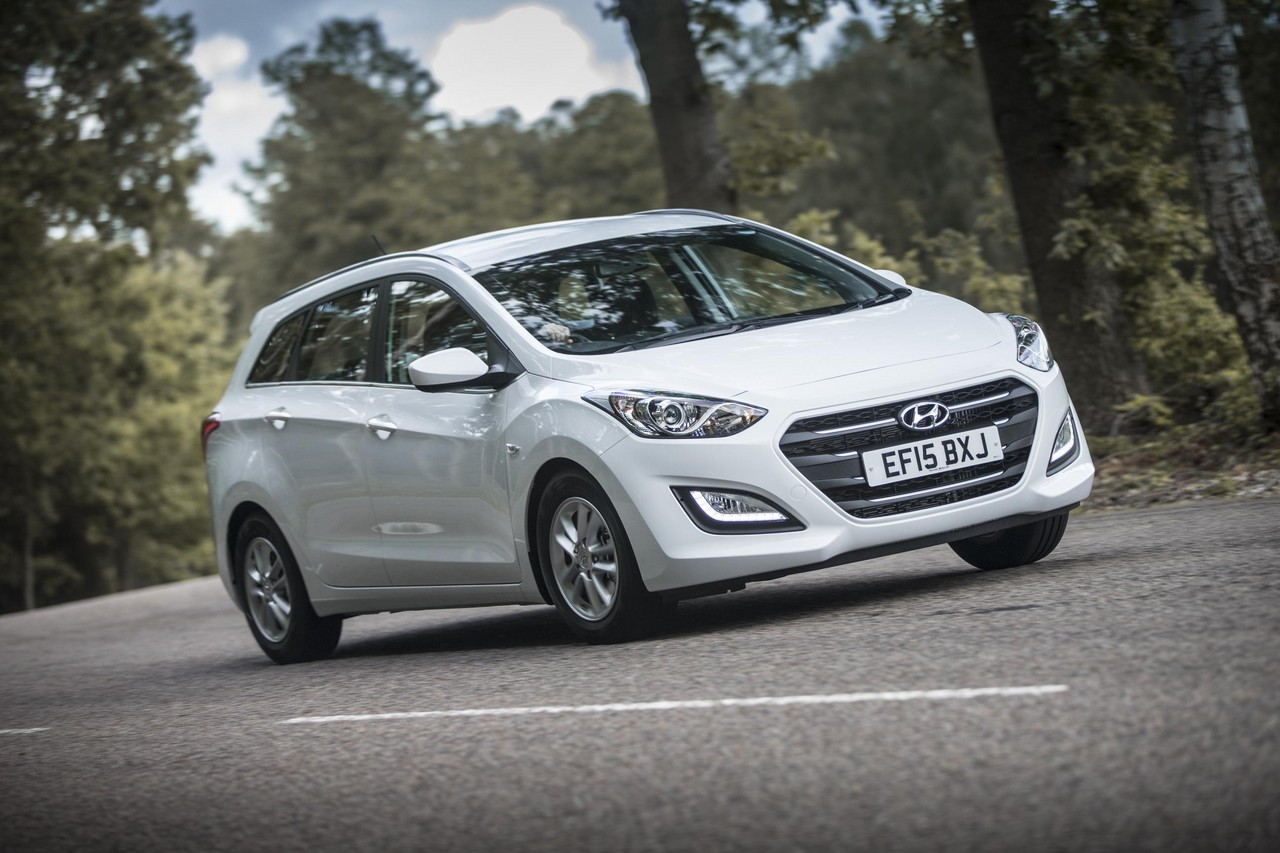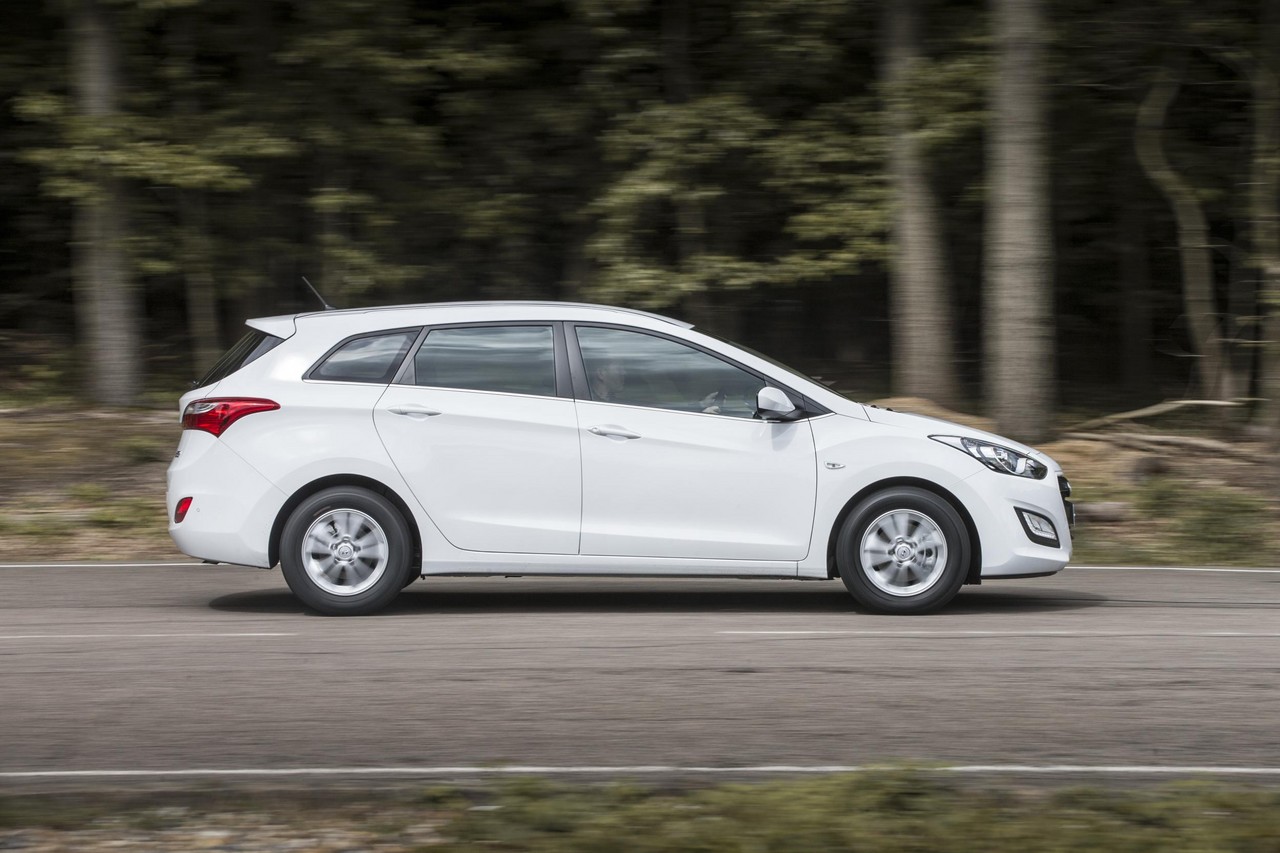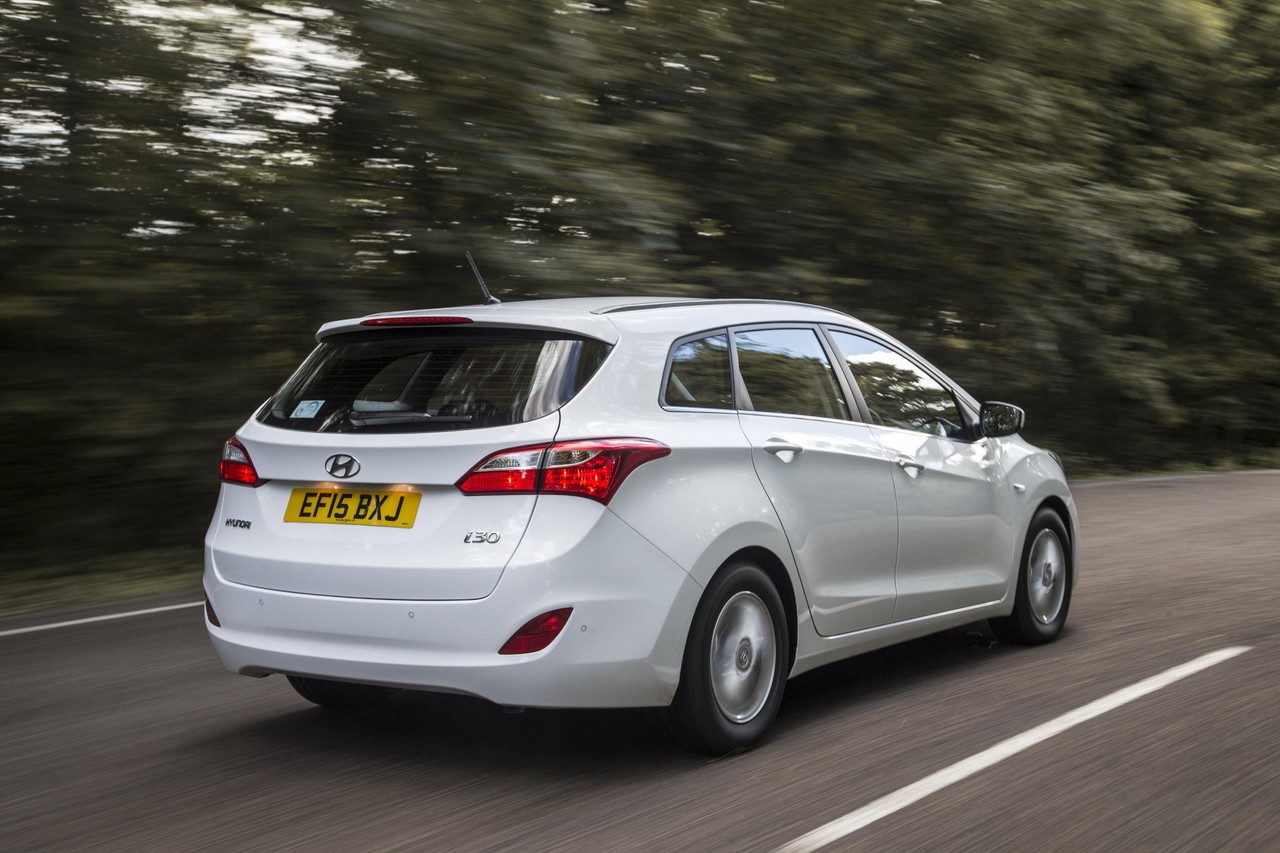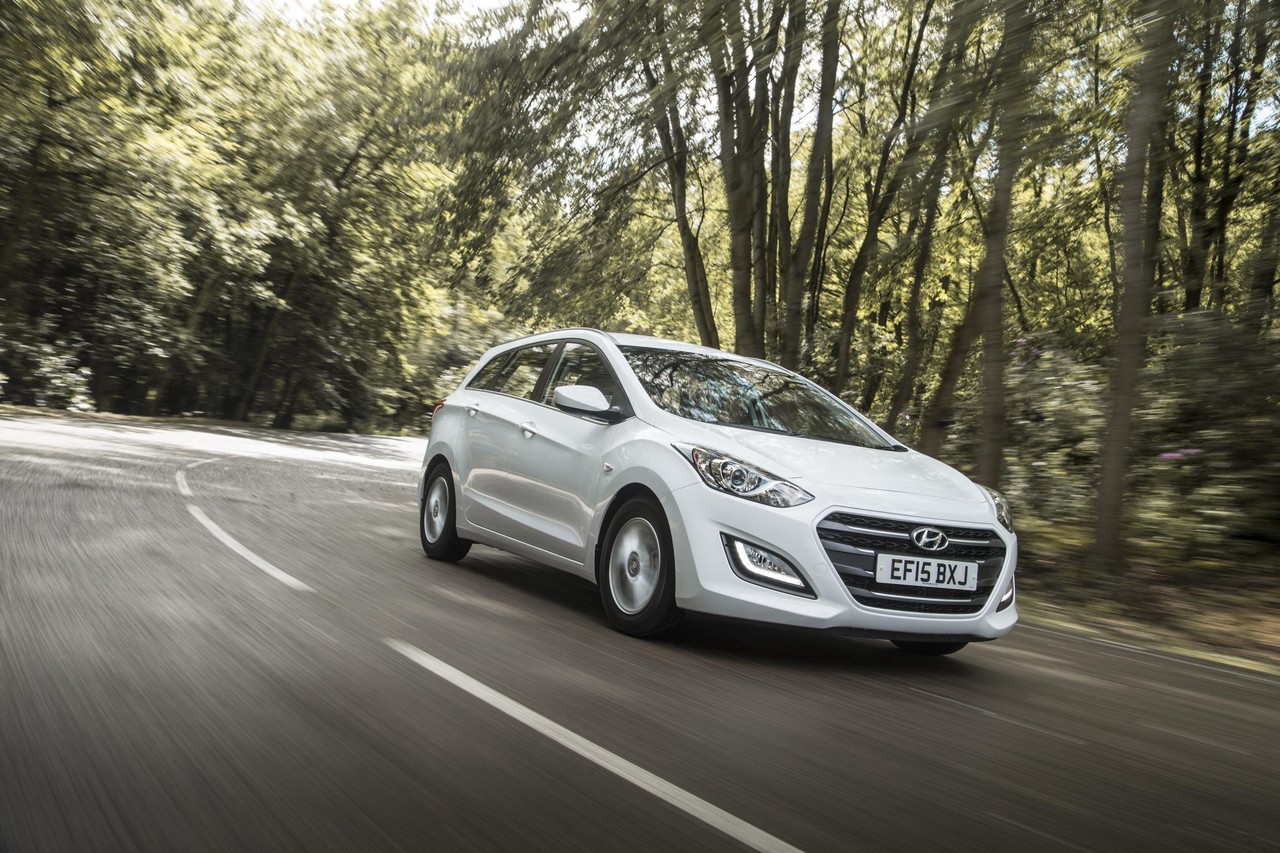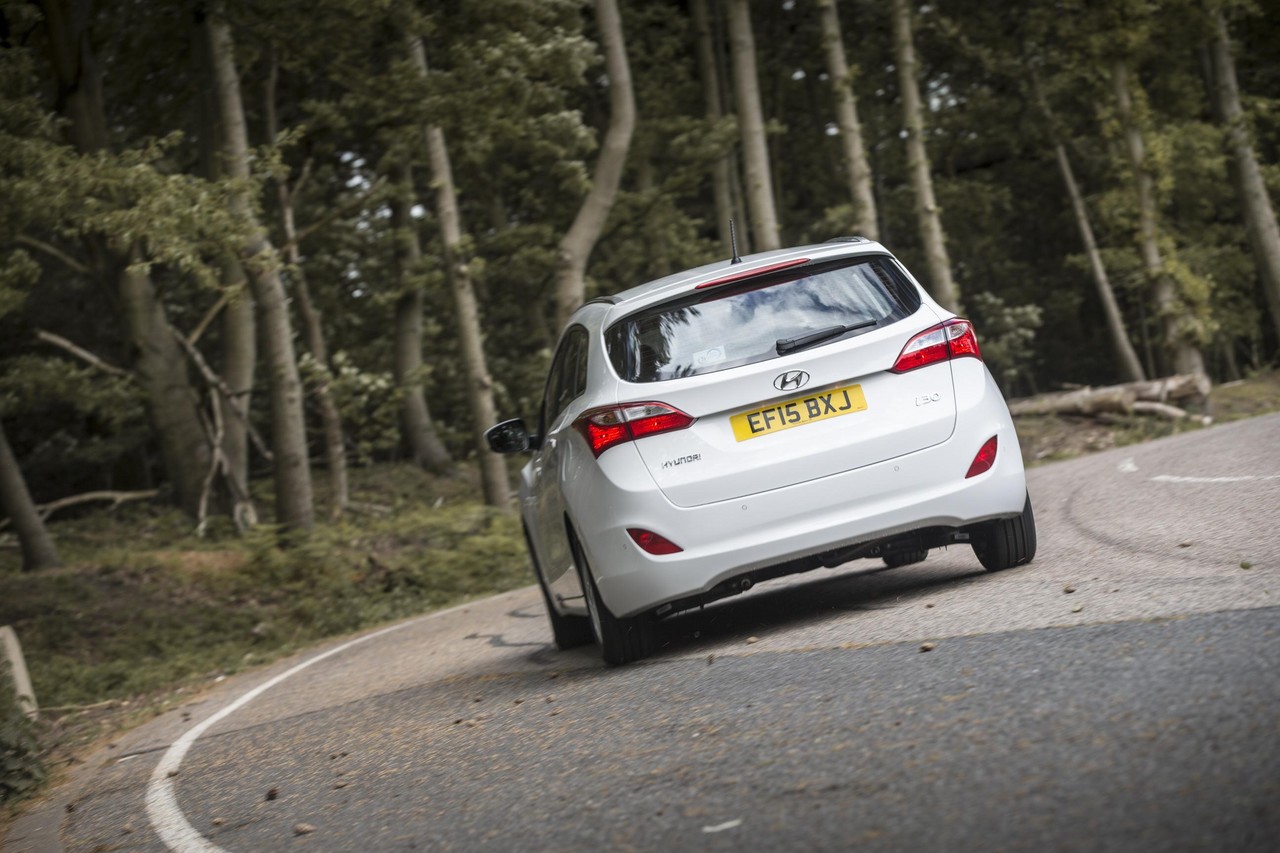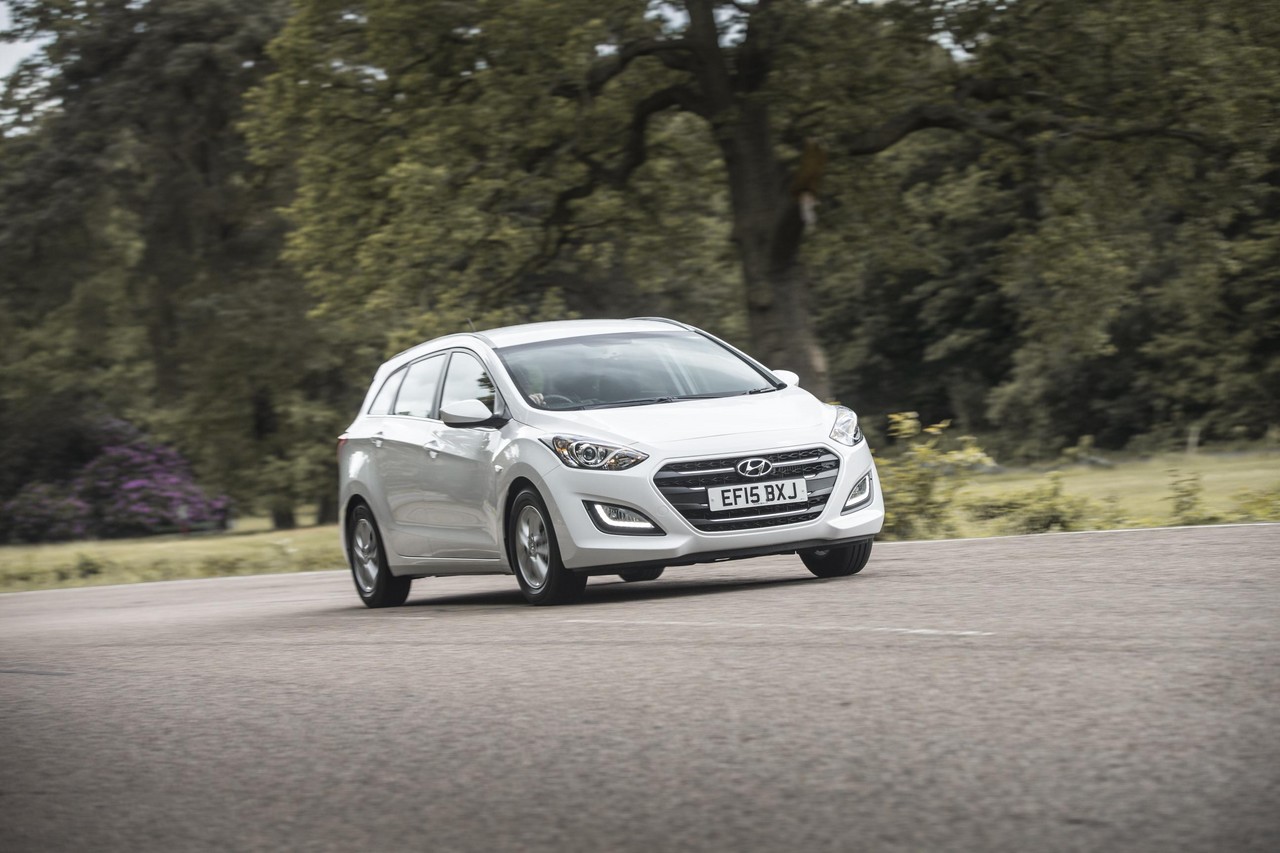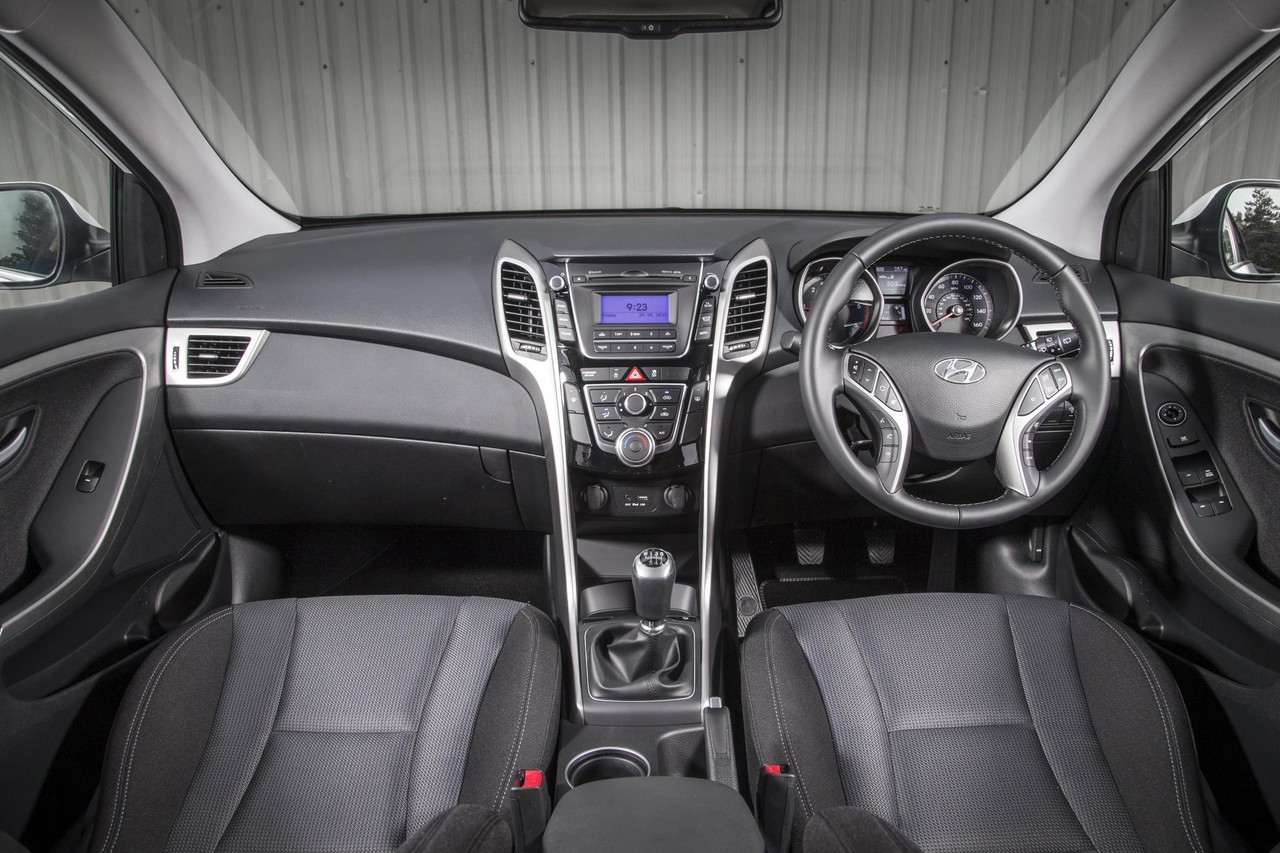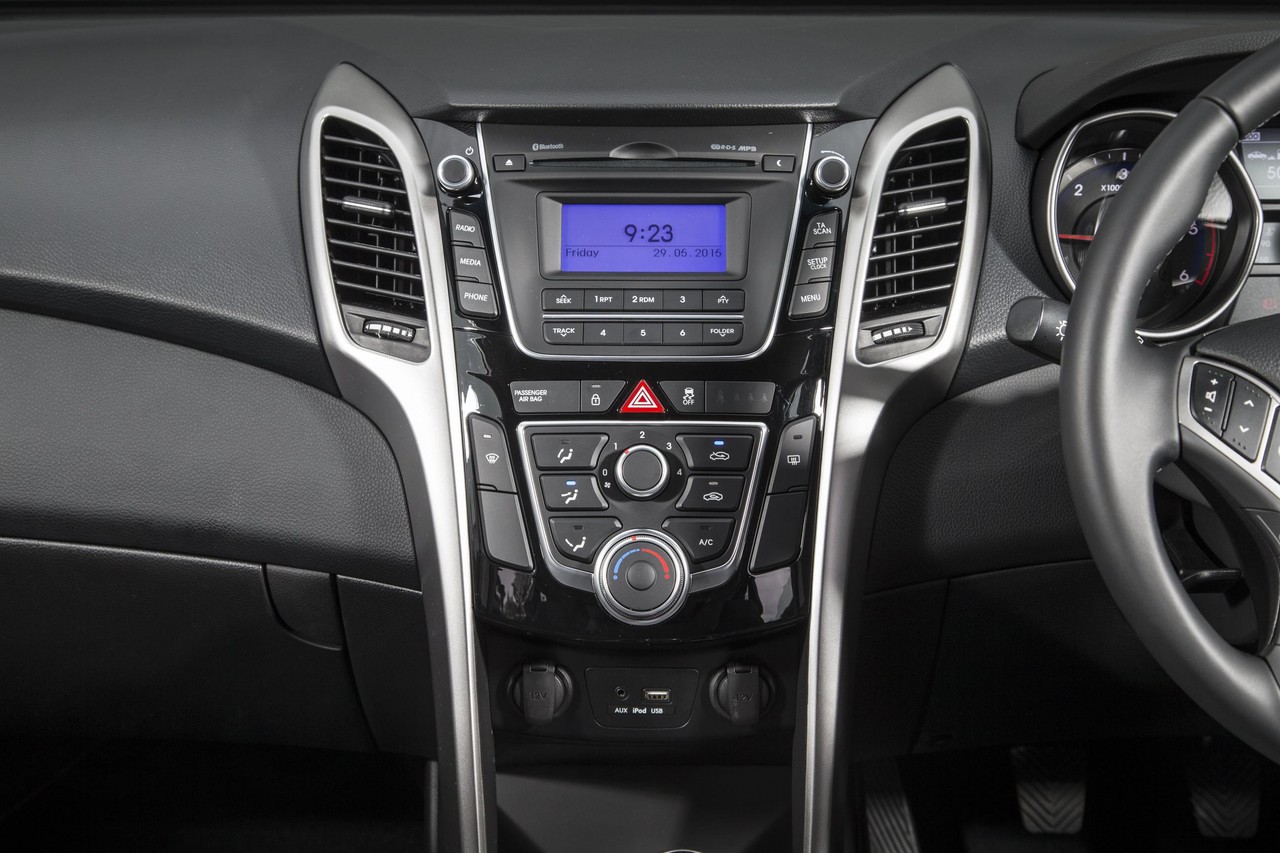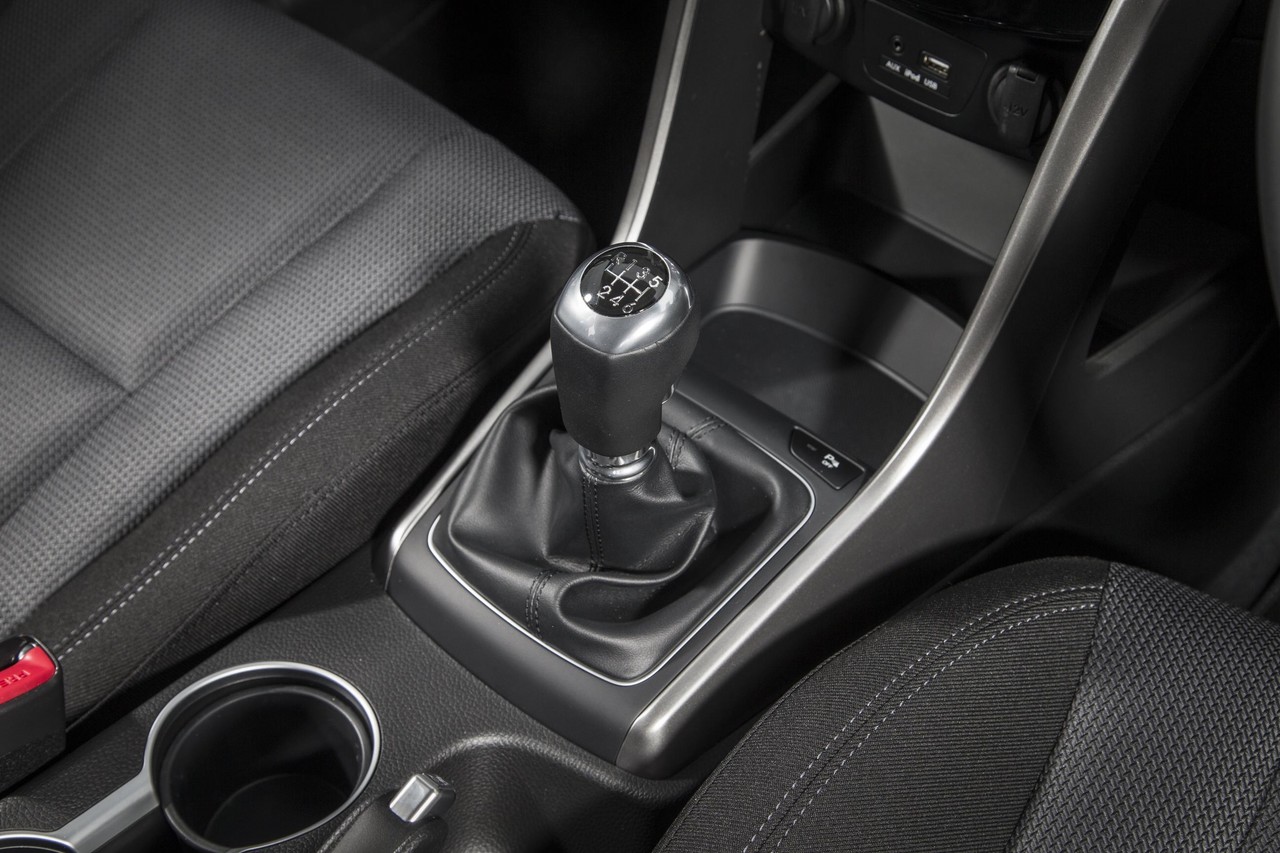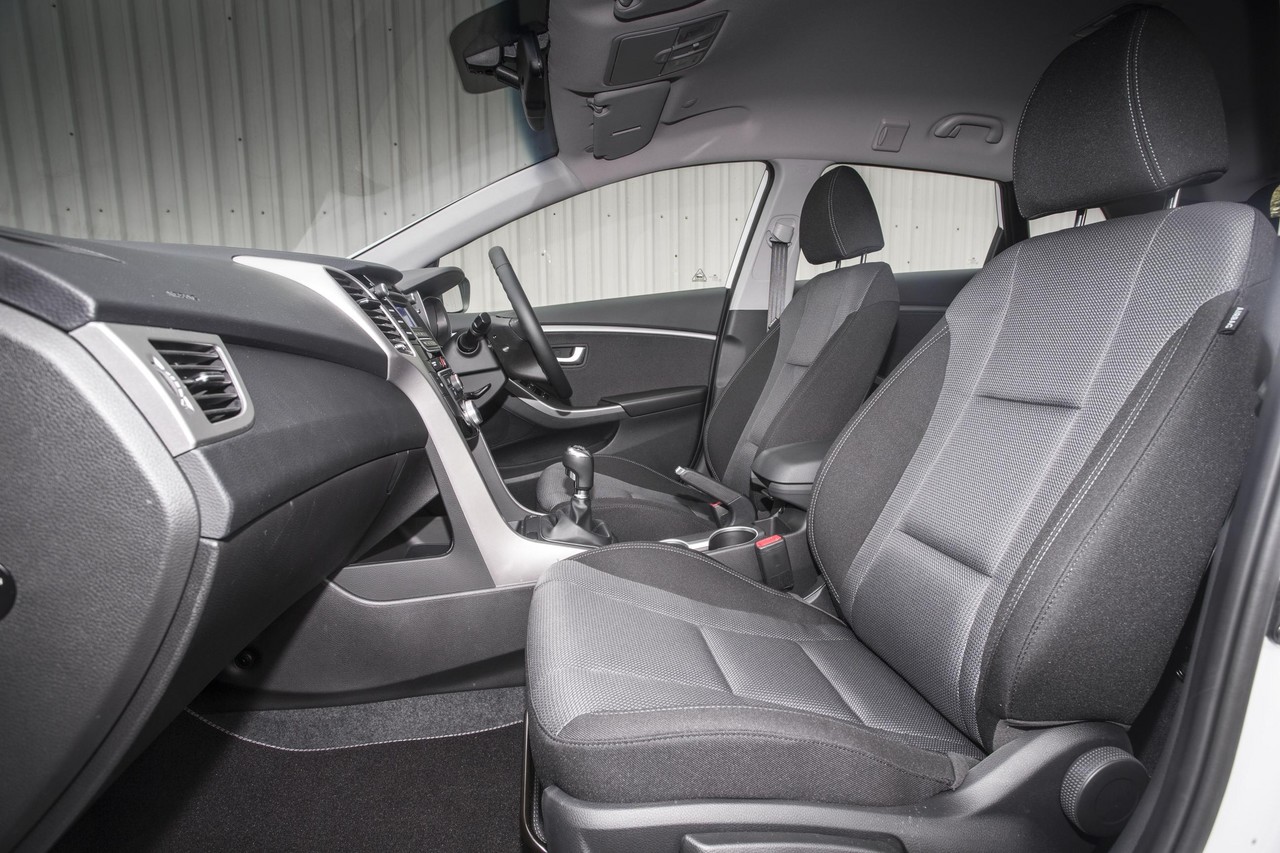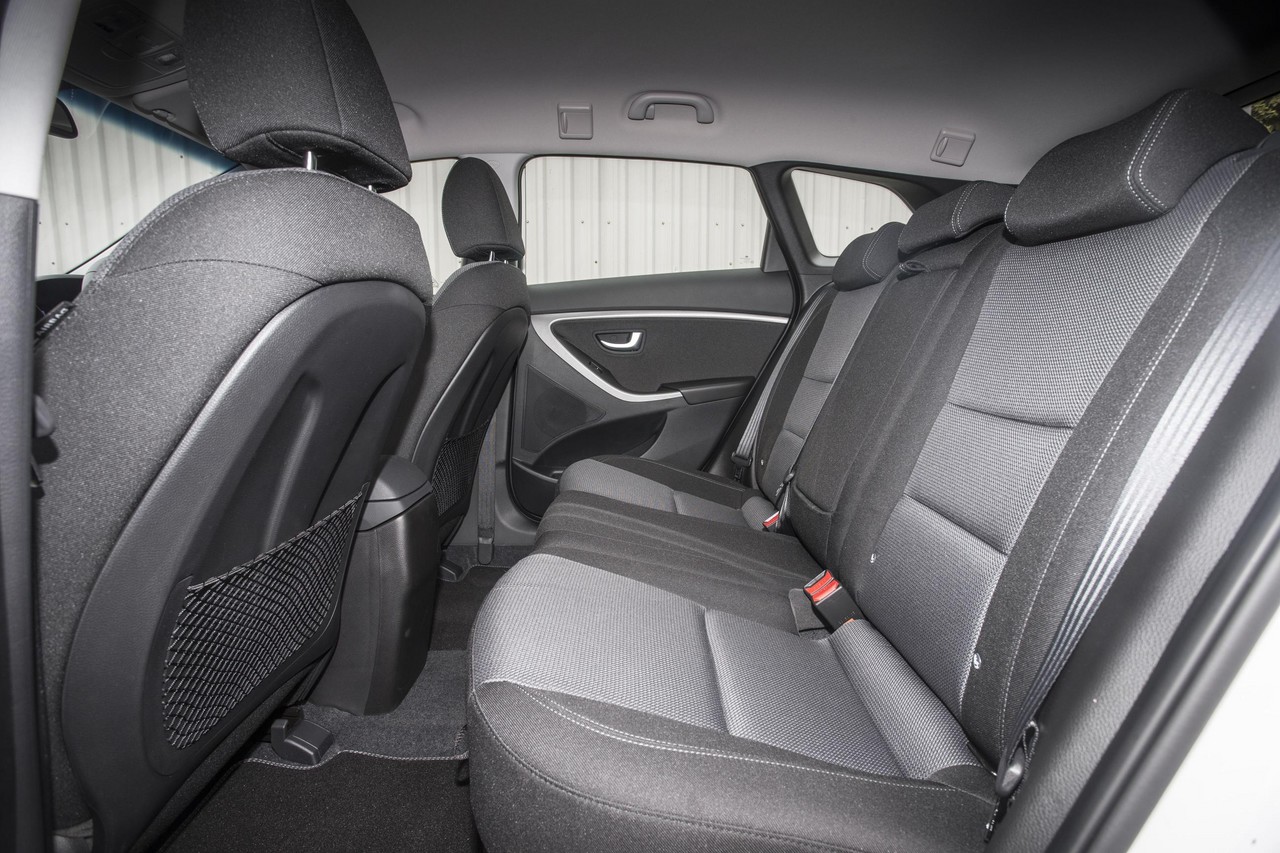
- Comfortable ride
- High standard of interior fit and finish
- Quiet, well-insulated cabin
- Frugal turbo-diesel engine
- Vague steering
- Interior lacks sound-insulation
- Dynamics short of Volkswagen Mk.7 Golf Wagon
Review: Hyundai GD i30 Tourer (2013-15)
Overview
Released in February 2013, the Hyundai GD Series I (GD.I) i30 Tourer was a mid-size wagon. Manufactured in Nosovice, Czech Republic, the front-wheel drive GD i30 Tourer was available with 1.6-litre petrol and turbo-diesel engines that were mated to either six-speed manual or automatic transmissions. Beyond the drivetrains, the i30 Tourer was offered in Active and Elite editions.
G4FD and D4FB engines
Of the engines,
- the 1.6-litre G4FD ‘Gamma’ petrol engine had an aluminium block and cylinder head, double overhead camshafts, four valves per cylinder, continuously variable intake and exhaust valve timing (D-CVVT) and a compression ratio of 11.0:1; and,
- the 1.6-litre D4FB ‘U2’ diesel engine had a cast iron engine block, an aluminium cylinder head, common-rail injection, a variable geometry turbocharger, double overhead camshafts, four valves per cylinder and a compression ratio of 17.3:1.
Dimensions and body
Compared to its FD i30cw predecessor, the i30 Tourer was 10 mm longer (at 4485 mm), 5 mm wider (1780 mm), 65 mm lower (1500 mm) and had a 50 mm shorter wheelbase (2650 mm). With the rear seats in position, rear cargo space for the GD i30 Tourer was 528 litres, though this increased to 1642 litres when the rear seats were folded flat.
The GD i30 Tourer had a stronger chassis than its predecessor due to a higher proportion of ultra high tensile steel (including the inner and outer sill panels), three new cross-members which were connected to the suspension mounts, strengthened front door anti-intrusion beams and an enlarged joint between the B-pillar and roof.
Suspension
The GD i30 Tourer had subframe-mounted MacPherson strut front suspension and multi-link rear suspension.
| Engine | Details | Variant | Trans. | Peak power | Peak torque |
|---|---|---|---|---|---|
| 1.6 GDI | 1.6-litre direct-injection petrol I4 | Active | 6sp man., 6sp auto |
99 kW at 6300 rpm | 164 Nm at 4850 rpm |
| 1.6 CRDi | 1.6-litre common-rail turbo-diesel I4 | Active | 6sp man., 6sp auto |
94 kW at 4000 rpm | 260 Nm at 1900-2750 rpm |
| Elite | 6sp auto |
Safety equipment
Standard safety equipment for the i30 Tourer included dual front airbags, a driver’s knee airbag, front side airbags, full-length curtain airbags, ABS, electronic brake force distribution, brake assist, electronic stability control, traction control and front seatbelts with pretensioners and load limiters.
Euro NCAP testing
In Euro NCAP testing , the GD i30 hatchback received a five star rating which included a 90 per cent adult occupant protection rating and a 90 per cent child occupant protection rating. In the offset impact, occupant protection was generally rated as good, though protection of the chest and left lower leg were rated as adequate. In the side impact test, occupant protection was also generally rated as good, though chest protection was adequate. In the more severe pole test, chest protection was rated as weak and abdominal protection as adequate.
Based on evidence provided by Hyundai to ANCAP that the i30 Tourer would provide comparable occupant protection to the i30 hatchback, the i30 Tourer received a five star adult occupant protection rating with a score of 35.69 out of 37.
Features: i30 Tourer Active and Elite
Standard features for the i30 Tourer Active included 16-inch alloy wheels with 205/55 R16 tyres and a full-size spare, a six speaker sound system with a CD player, MP3-compatibility, auxiliary inputs (3.5 mm/USB/iPod), Bluetooth connectivity and a five-inch touch screen, air conditioning, cruise control (with speed limiter), front and rear fog lights, daytime LED running lights, rear parking sensors, 60/40 split and flat folding rear seats, a cooled glovebox, remote central locking, power windows and heated mirrors, tilt and telescopic steering wheel adjustment, three 12 volt power outlets, roof rails, a cargo net and an immobiliser.
The i30 Tourer Elite was further equipped with a satellite navigation system with a seven-inch display and SUNA live traffic updates, dual-zone climate control air condition, a reversing camera, automatic headlights, rain-sensing wipers, proximity key, push-button start and power folding door mirrors.
Brochure
Specifications
- Specifications: Hyundai GD i30 Tourer (March 2013)
- Specifications: Hyundai GD i30 Tourer (July 2014)
Related links
Review: Hyundai GD.II i30 Tourer (2015-16)
Overview
Released in Australia in June 2015, the Hyundai GD Series II (GD.II) i30 Tourer introduced a revised range as the Active variants were replaced by unnamed, entry-level variants. Significantly,
- Seven-speed double clutch transmissions (DCT) were was fitted as standard across the range; and,
- The U-II turbo-diesel engines were upgraded such that peak torque increased from 260 Nm to 300 Nm, while the compression ratio was reduced to 16.0:1.
Visually, the Hyundai GD.II i30 Tourer could be identified by its new grille with black horizontal slats and satin chrome inserts, and new machined-face alloy wheels with gunmetal grey inserts.
| Engine | Trans. | Peak power | Peak torque | |
|---|---|---|---|---|
| i30 Tourer | 1.6-litre direct-injection petrol I4 | 7sp DCT | 98 kW at 6300 rpm | 163 Nm at 4850 rpm |
| i30 Tourer, i30 Tourer Elite |
1.6-litre common-rail turbo-diesel I4 | 7sp DCT | 100 kW at 4000 rpm | 300 Nm at 1750-2500 rpm |
Features
Standard features for the i30 Tourer were extended to include a five-inch multimedia touch screen and rear view camera. The new audio system omitted a CD player, but provided Pandora internet radio capability when tethered with a compatible iOS or Android smartphone.
Standard features for the I30 Tourer Elite were unchanged; it retained its seven-inch multimedia display and CD player.
Related links
